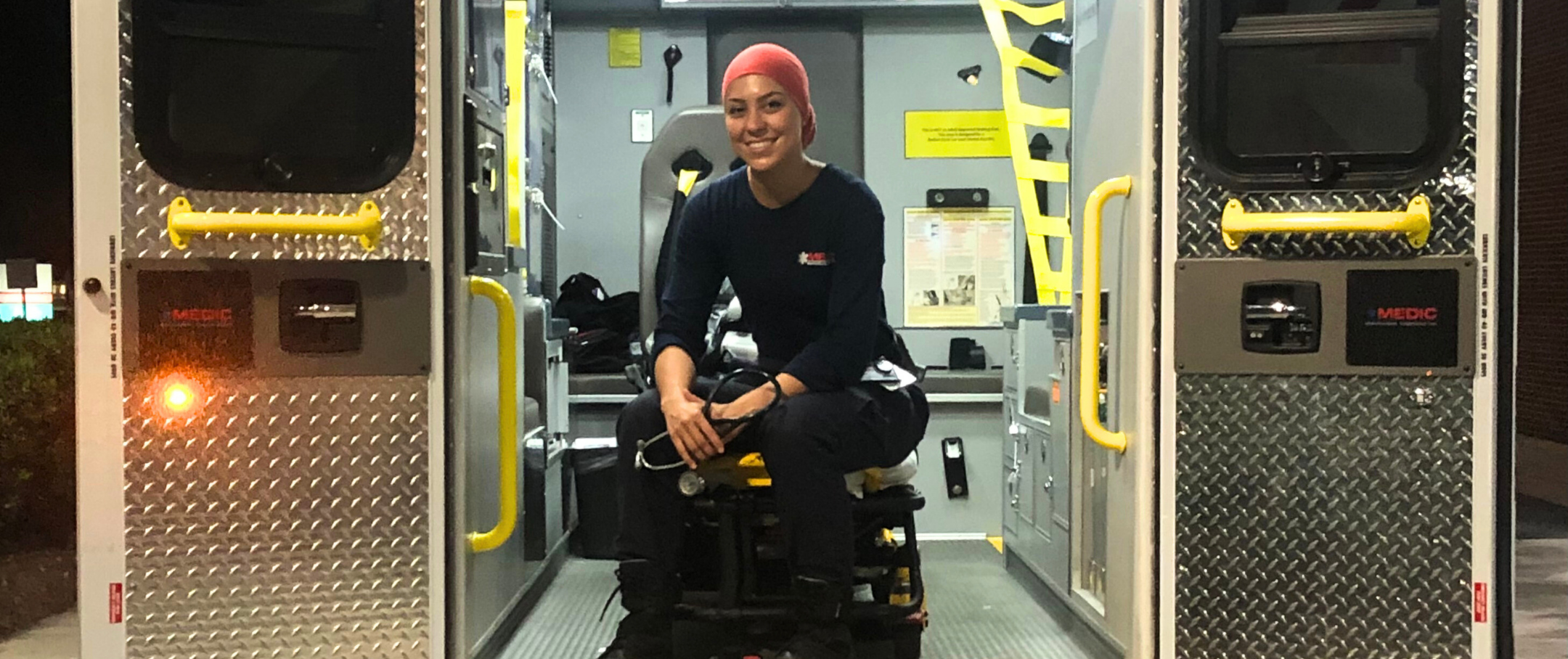What does EMT training look like?
In an EMT class, participants gain a thorough understanding of the skills and knowledge needed to provide effective emergency medical care in pre-hospital environments. EMT classes are delivered at varying lengths and formats. You have the option to pick the kind of class that’s best for you. The average EMT class lasts between 120 and 150 hours. You could choose whether you want to do the class mostly online or all in-person. You could potentially do the class in a few weeks or a few months. It depends on what fits your needs.
Training typically begins with an overview of the EMT’s roles and responsibilities, including key legal and ethical considerations and the importance of safety for both the responder and the patient. Students are introduced to basic human anatomy and physiology to understand how the body functions under normal conditions and how it responds to various illnesses and injuries.
Patient assessment is a central component of EMT training. Students learn to evaluate patients systematically, starting with assessing the scene for safety and performing an initial assessment to identify life-threatening conditions. Training emphasizes the primary and secondary assessment processes, gathering medical histories, and conducting thorough physical exams. Students are taught to recognize the signs and symptoms of common medical conditions, such as cardiac events, respiratory distress, and strokes, and how to prioritize care based on the severity of the situation.


Airway management and the stabilization of breathing and circulation are core aspects of the curriculum. Participants practice techniques to maintain an open airway, including suctioning and the use of airway adjuncts like oropharyngeal and nasopharyngeal airways. They also learn to administer oxygen and use advanced tools like bag-valve masks (BVMs). Cardiopulmonary resuscitation (CPR) is a significant focus, often taught to align with recognized standards, along with training in the proper use of automated external defibrillators (AEDs). Hands-on practice ensures that students are comfortable performing these lifesaving procedures in high-stress environments.
The management of traumatic injuries is another vital topic. Students learn to address a wide range of injuries, including fractures, burns, spinal injuries, and severe bleeding. They practice techniques such as splinting, applying tourniquets, and dressing wounds while gaining an understanding of how to manage shock and other complications resulting from trauma.
Medical emergencies, such as allergic reactions, diabetic issues, seizures, and poisoning, are covered in depth. Students receive training on administering medications allowed within their scope, such as epinephrine auto-injectors, glucose, and inhaled medications. The course also introduces basic pharmacology concepts to ensure safe and effective administration of these treatments.
Specialized training is provided for working with diverse patient groups, including pediatric, geriatric, and obstetric patients. This ensures students are prepared to manage childbirth emergencies, care for infants and children, and address the unique challenges posed by elderly patients.
Transport and communication are key components of an EMT’s role, and students learn how to safely lift, move, and transfer patients to ambulances or healthcare facilities. Effective communication with other medical professionals and writing clear, detailed patient care reports are also emphasized.
Throughout the class, students engage in hands-on training with medical equipment, participate in simulated scenarios, and may have opportunities for ride-alongs or clinical experience. These practical exercises allow students to apply their knowledge in real-world contexts while building confidence in their abilities.
To prepare students for the National Registry of Emergency Medical Technicians (NREMT) exam, EMT classes are specifically structured around the knowledge and skills outlined in the NREMT’s standards. The course typically integrates test preparation into its curriculum by using practice exams, quizzes, and scenario-based evaluations that mirror the types of questions and practical assessments included in the NREMT certification process. These assessments help students become familiar with the exam format and identify areas that need improvement.
In addition, instructors often provide focused reviews of critical concepts, such as airway management, medical and trauma care protocols, and patient assessment strategies. Many classes use adaptive learning tools or online platforms that simulate the NREMT’s computer-adaptive testing style, ensuring students are comfortable with the digital exam environment. Practical skill stations are also emphasized to prepare students for the psychomotor portion of the exam, where they must demonstrate competency in key procedures like CPR, spinal immobilization, and patient assessment.
By the end of the course, students will not only have developed the skills and knowledge needed to respond to medical emergencies but will also be thoroughly prepared to tackle the NREMT exam. This comprehensive preparation ensures that they are well-equipped to achieve certification and begin their careers in emergency medical services with confidence.
